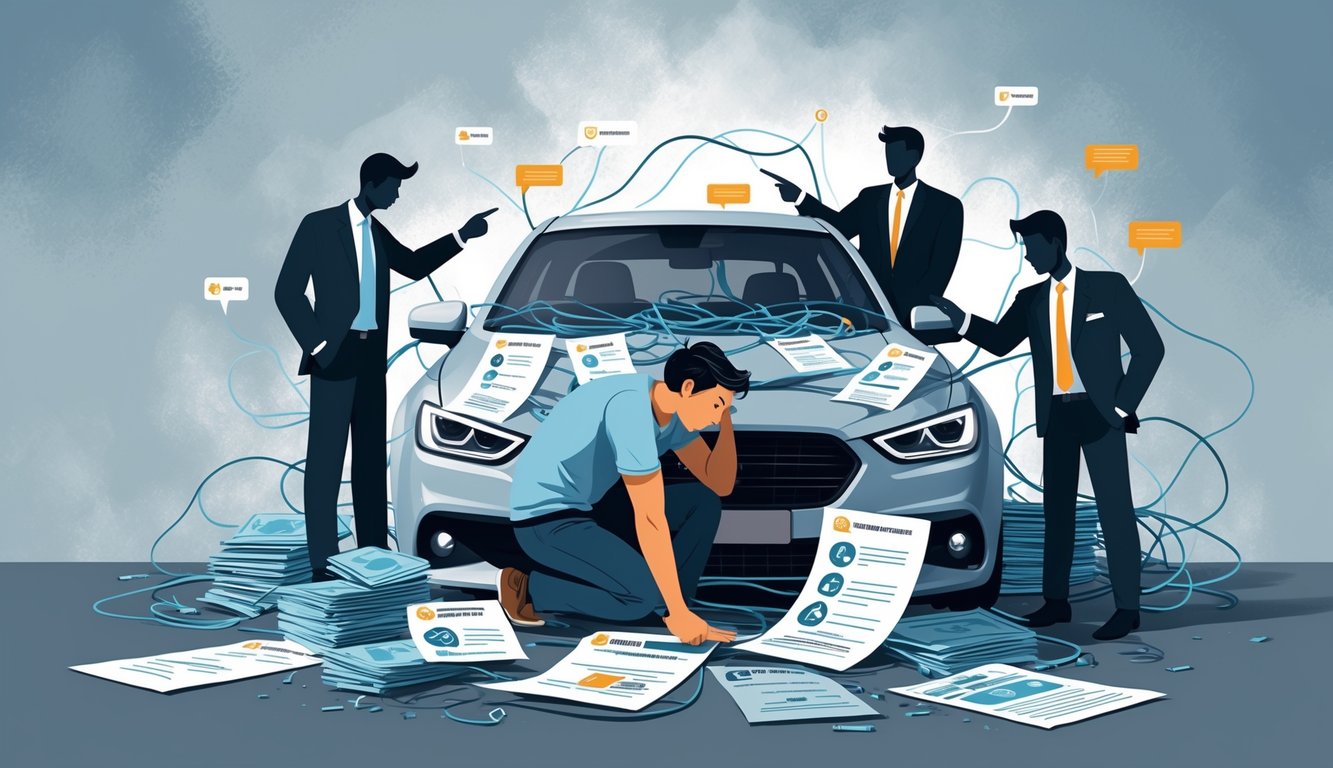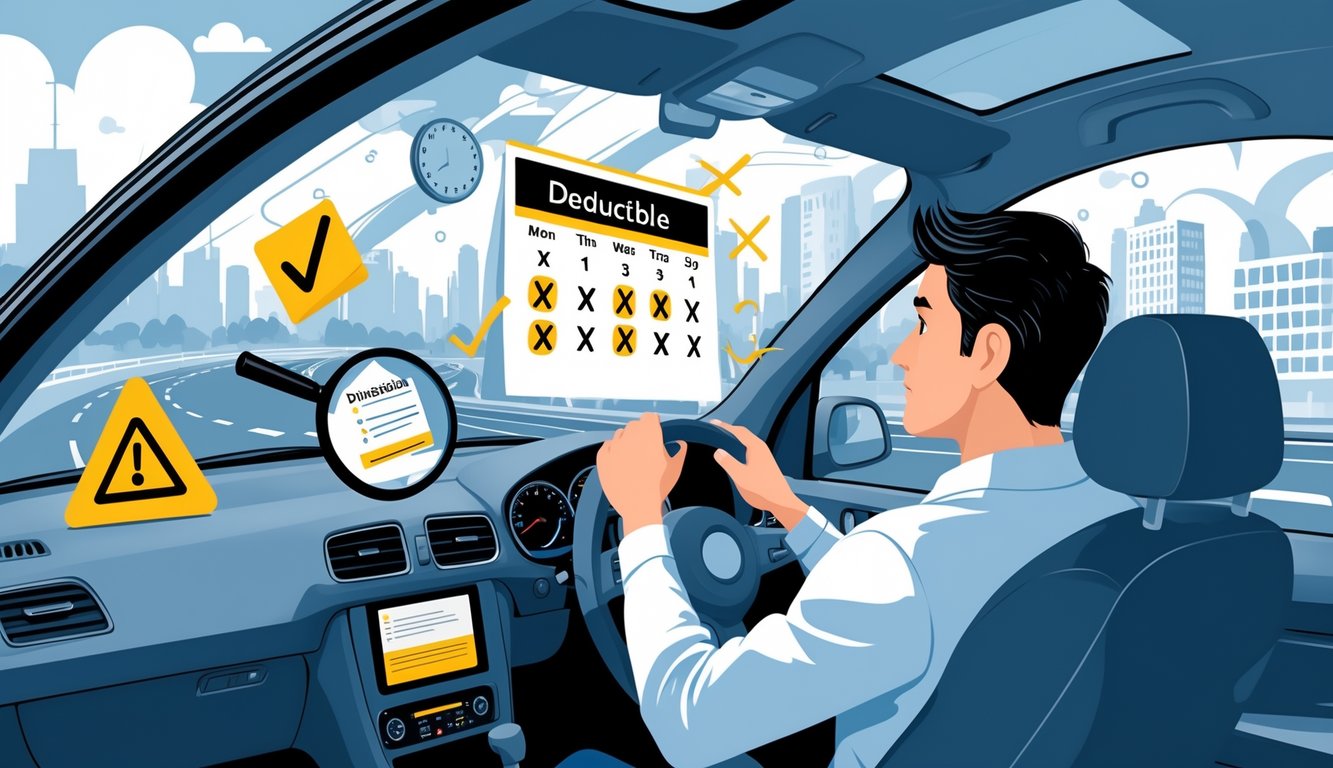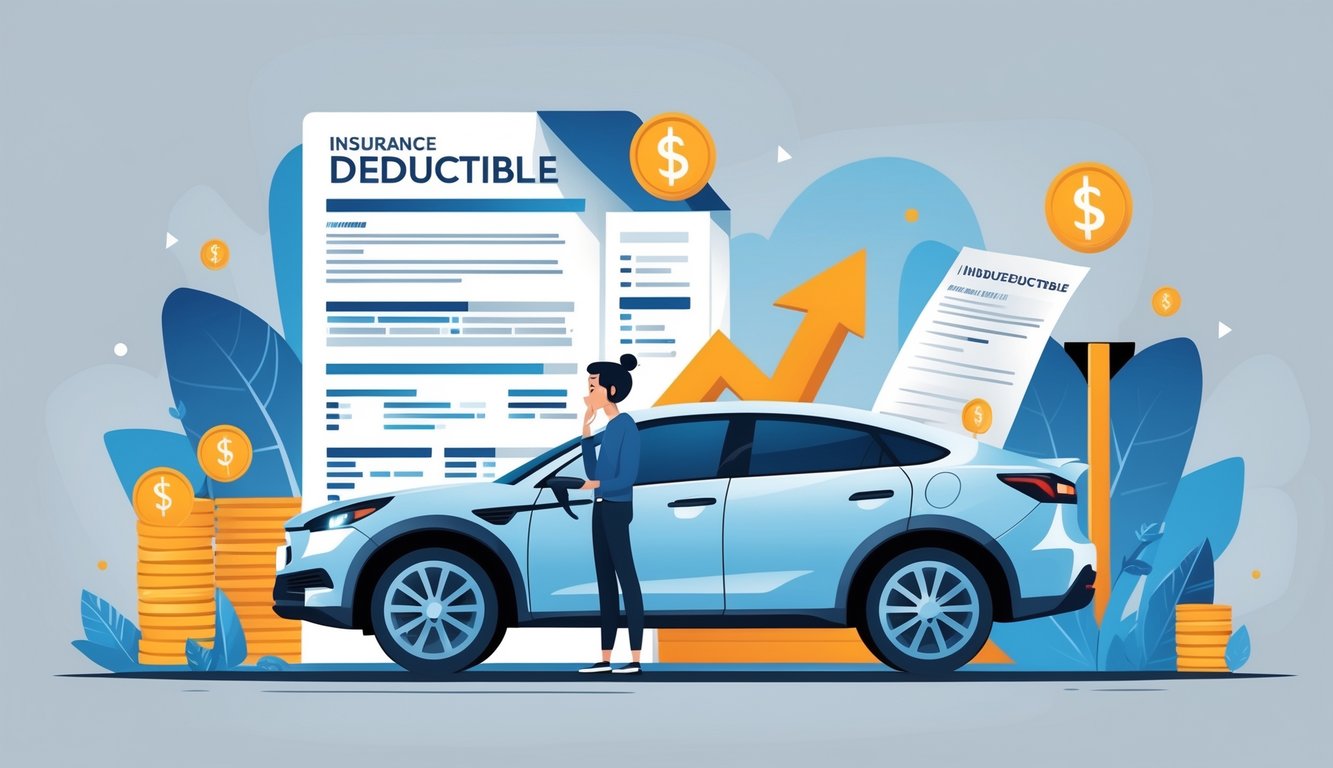
Key Insurance Coverage Types and Deductibles
It’s wild—every “save money on insurance” tip skips the stuff that actually bites you later. The advice is always “shop around” or “raise your deductible,” but not, you know, the fine print that makes you want to scream when you file a claim. The real traps? They’re invisible until you’re already stuck.
Collision Coverage Deductible Pitfalls
Collision insurance sounds so simple—pay this, get that. Except, not really. Say you picked a $1,000 deductible because some agent said, “Hey, you’ll save $18 a month!” Then you forget all about it until a fender bender costs $950. Insurance pays nothing, but your record still gets a mark.
Nobody ever tells you repair shops sometimes split bills into “covered” and “not covered” parts, so you might end up paying $1,200 on a $1,300 repair, and the insurer tosses in a few bucks or just shrugs. Leasing? Good luck—lease companies often set strict max deductibles, and if you mess up, you get slapped with penalties.
J.D. Power’s 2024 survey said 29% of drivers didn’t know their collision deductible until after a claim. I asked my agent, “Why doesn’t anyone spell out which accidents are easiest to get reimbursed for?” She just said, “Not our job.” Cool, thanks.
Comprehensive Coverage Trapdoors
Let’s just say it: comprehensive coverage is a total wild card. Lose $400 to hail and your $500 deductible means you get nothing but a headache. The National Association of Insurance Commissioners even buries a warning about this in their research, but who’s reading that?
OEM glass? Sometimes it counts toward the deductible, sometimes it doesn’t. Dealers tack on “inspection” fees that aren’t covered, so your cracked windshield might turn into $650 out of your pocket and zero from the insurer. Oh, and animal damage? I learned the hard way (raccoons, don’t ask) that some policies limit payouts unless you file within 72 hours.
Then there’s depreciation. I’ve seen policies where the insurer only pays for the depreciated value of a paint job, not the full cost, so you’re left paying 30% or more. None of the online quote tools mention this. It’s all over the place, no matter what the big brands claim.
Personal Injury Protection Deductibles
Most people forget about their Personal Injury Protection (PIP) deductible until the ER asks for $950 up front. Auto claims insiders—like this guy I know who’s processed thousands of no-fault claims—say the gap between PIP coverage and actual bills is kind of scary, especially in the states with “minimum” coverage rules.
Nobody tells you PIP usually pays out only after your health insurance, so you get stuck paying both deductibles. That’s $400 for health, $500 for PIP, just to get your first bandage. If you don’t have a “zero-deductible” PIP add-on, you can end up paying cash for basic treatments.
Some policies cover lost wages or stuff like childcare, but only after you jump through hoops—receipts, forms, and then arguing with the insurer about whether your injury “counts.” The deductible still hits you first, and the rest takes weeks or months. Agents hate explaining these delays; they’d rather just hand you a pamphlet and move on.
The Role of Driving History in Deductible Decisions

What really gets me is how one tiny accident from two years back doesn’t just hike your premiums—it screws up your deductible options too. You’d think old accidents would just fade, but insurers love tracking every detail, making renewals feel like a weird guessing game.
Accident Records and Premium Impacts
Even if you’re not out there drifting corners, one small claim and your premium jumps. It’s not just the price—insurers start nudging you toward higher deductibles, too. People with clean records get tempted into sky-high deductibles for lower payments, but that’s just betting you’ll never file.
Insurance Information Institute stats say five years of no claims means you pay 20-30% less, but then what? You feel like you can “afford” a big deductible. Janet from work tried that—saved a little, then a tiny scrape cost $2,300 and her $1,500 deductible ate all her savings. Why don’t deductibles work like punch cards? Ten claims, get a free car wash? No? Figures.
How Insurers Use Your Record Against You
Insurers keep tabs on every ticket, every mailbox you’ve grazed. I watched a friend lose his deductible options after one at-fault claim—just a cracked headlight. Underwriters claim their “data doesn’t lie,” but half the time they’re just judging you by your zip code or whether you drive 40 minutes or five.
I asked my agent last year if a clean record meant I could lower my deductible. She mumbled about “aggregate loss ratios” and tried to sell me accident forgiveness. Turns out, once they label you “high risk,” they limit your deductible choices. You end up stuck with higher premiums and higher deductibles anyway. It’s like a casino where you never win, and the fine print just gets smaller every year.
Raising Your Deductible: Benefits and Risks

Trading lower premiums for a bigger deductible sounds smart until you’re explaining to your friend why their “savings” vanished after a run-in with a mailbox. I keep meeting people who think the math always works in their favor, but the fine print gets them every time.
When to Consider Raising Your Deductible
Forget the TV ads shouting about “quick savings”—it’s the spreadsheet that matters, not some actor’s voice. My brother raised his deductible for a cheaper premium, then lost all his savings after one cracked windshield. If your emergency fund’s on life support, raising the deductible is just asking for trouble.
Some leases won’t even let you mess with the deductible. Lenders don’t care about your budgeting skills. But I’ve seen people with multiple cars get slightly better rates by raising the deductible on one, as long as they have a clean record and can actually pay $1,000 or more on the spot (not just in theory).
Insider tip: My agent friend says raising your deductible from $500 to $1,000 might cut your premium by 15%, but she’s blunt—if you can’t write that check tomorrow, don’t bother. I’ve never heard anyone complain about a deductible that’s too low, but I’ve heard plenty of regrets from the other direction.
Potential Pitfalls You Should Know
Here’s what nobody says: insurance companies pocket your extra risk. Savings calculators ignore all the little stuff—mirrors, hail, flat tires—where the claim doesn’t even hit your new deductible. You pay, insurer says nothing.
I met a driver who raised her deductible mid-policy, saved $180, then got rear-ended by a cyclist (yes, really). She paid $1,000 for repairs and still had to argue with the finance company. Sometimes lenders cap deductibles, and if you break the rules, your insurance can get voided.
Supposedly, most drivers file a claim every 17.9 years (thanks, Insurance Information Institute, 2023). My dad? Two deer in three years, both repairs just below his deductible. Raising your deductible is just gambling on the future, and guess who always wins. At least wardrobe malfunctions aren’t this expensive.
